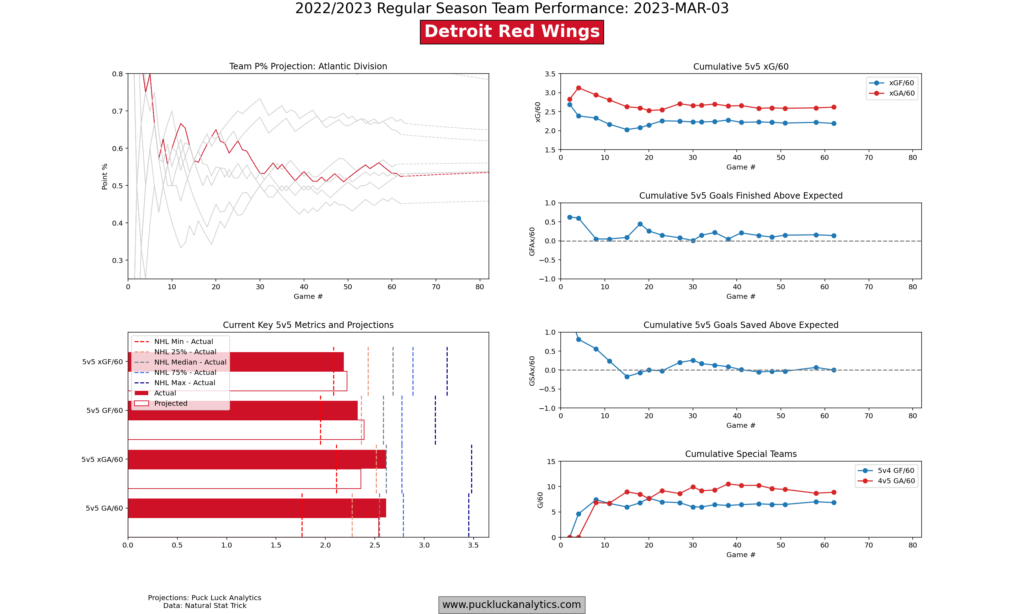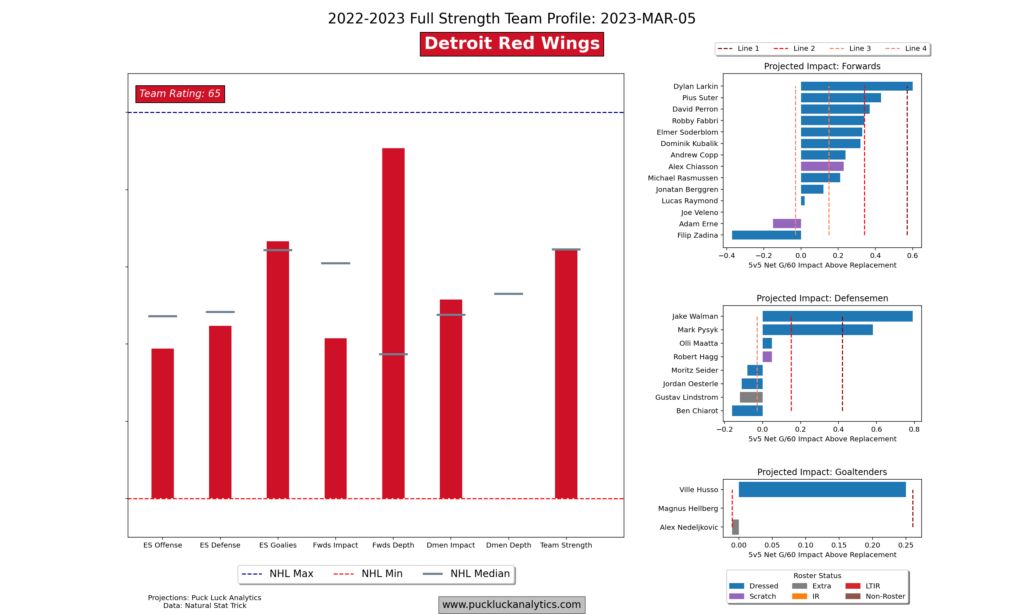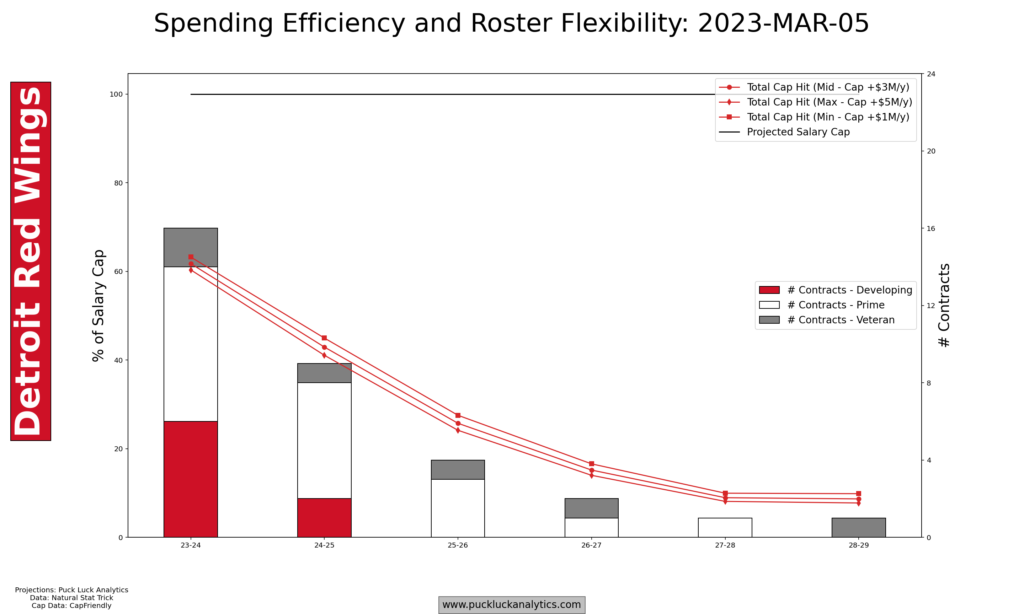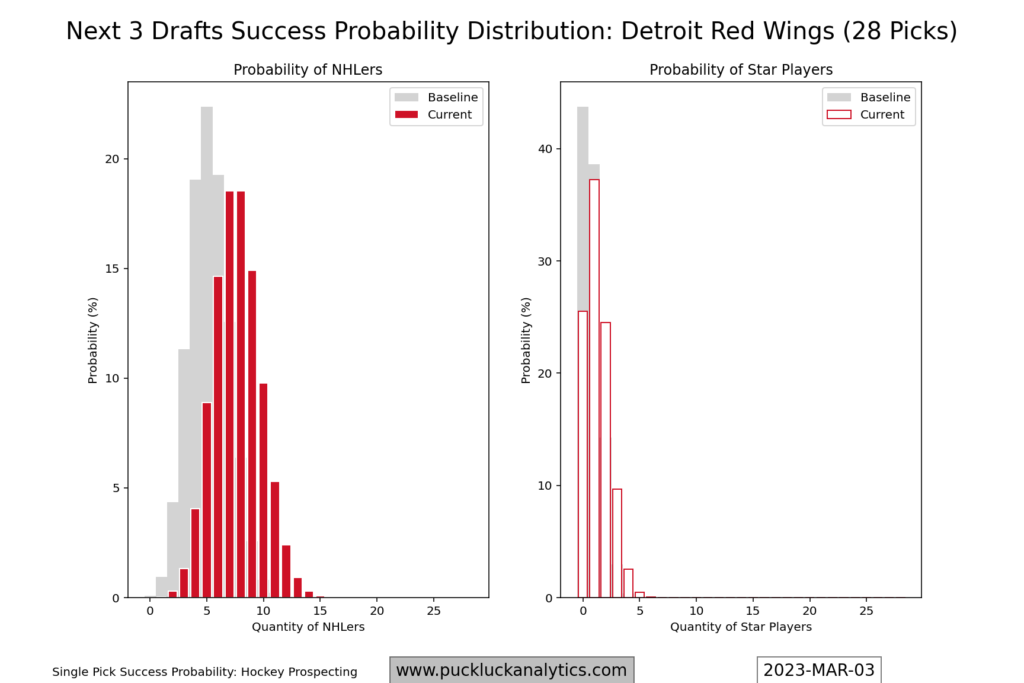Steve Yzerman returned to Detroit to take the reigns of the Red Wings as GM in April of 2019. At the time, it brought hope to a fanbase that a return to greatness was in store for a historic franchise that had fallen on hard times. After successfully building the Tampa Bay Lightning into a juggernaut, one of the Red Wings’ greats had returned to correct the course of the team.
Nearly four years later, there are rumblings of discontent from the general direction of Motown. Not all of Yzerman’s moves have paid off and, after a 2022 offseason that looked like an attempt to power out of rebuild mode, the Red Wings look likely to fall short of the postseason once again and became sellers at this year’s trade deadline.
Is it time to worry about the lack of results, or does the “Yzerplan” simply need more time to come to fruition? Over the next few posts, I’ll dig into that question. We’ll look at the state of the team and what the next steps may be to return the Red Wings to glory.
2022-2023 Season Performance
There was optimism going into the 2022-2023 season that the Red Wings were ready to power out of their rebuild. Sophomores Lucas Raymond and Moritz Seider would build on their outstanding rookie seasons and Yzerman added a host of veteran skaters during the 2022 offseason that were expected to bolster the team’s depth.
The results this season have been disappointing, particularly given the expectations. The Red Wings have struggled to control play at 5v5, holding an expected goal deficit at 5v5 that’s been consistent through the season. Strong 5v5 finishing has helped narrow the gap in expected goals, but it’s not been enough. Special teams haven’t helped either, as their powerplay has added less offense than their penalty kill has allowed the opposition. While they remain in the playoff chase, they’re at the back of the pack chasing the Eastern wild card spots.

Current Team Profile
The Red Wings profile as an average team based on their projected point percentage. The forward group is the weak point based on overall average impact, although there is little drop off in talent after the top players (indicated by the high forward depth ranking). The drop off in impact in the defense corps after the top couple of players is worrisome (note: Moritz Seider looks much better in next season’s model, but the point remains). The Wings look like a team that should expect to be in the mushy middle this season: good enough to hang around the wild card race, but not good enough to be considered a serious playoff contender.

Future Cap and Roster Flexibility
Yzerman has limited the length of contracts handed out throughout the Red Wings’ rebuild and only within the past year has he started handing out deals with longer term. The result is a cap sheet that is in good condition. Even after the recent extensions for Dylan Larkin and Jake Walman, the Wings have only about 60% of next season’s cap space committed. Not only that, but the long term deals that they have signed generally cover the years where we expect each player’s performance to be at it’s peak.

Prospect Pipeline
Despite some unfortunate draft lottery luck, the Red Wings have built up an impressive prospect pool through their rebuild. Hockey Prospecting ranks their prospect pool 3rd overall, with their skater pool ranking 4th and goaltenders 6th. We’re starting to see a number of the Wings prospects earn roster spots or get looks at the NHL level, with Lucas Raymond, Moritz Seider, and Jonatan Berggren leading the way.
The pipeline is set to continue to pump out prospects for the next few years as well. After deciding to become sellers at this year’s deadline, the Red Wings have accumulated an enviable amount of draft capital over the next 3 drafts. They have five picks in the first two rounds of the upcoming draft, as well as two first round picks in 2024.

What Next?
Yzerman’s Red Wings have gone through rock bottom in their rebuild and they’ve found their way back to the mushy middle. They’ve built a very good prospect pipeline in the process and they’ve come out of it with a healthy cap sheet. Now comes the hard part: consolidating assets and complementing the homegrown pieces with external additions to push through the mushy middle. How might they accomplish that? Continue on to Part 2.
Historical player data from Natural Stat Trick. Contract data from CapFriendly. Prospect projections from Hockey Prospecting.
